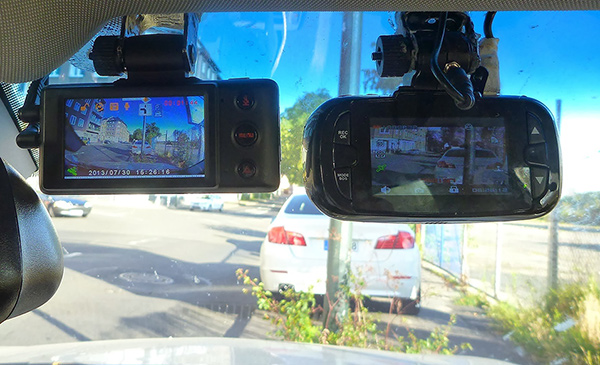
A Complete Guide to In-Cab Cameras
With so much depending on a truck driver’s performance, fleets are turning to in-cab cameras to assess driver behavior. Cameras are now recording from a number of angles, ranging from simple forward-facing dash cams to AI-powered units that offer a 360-degree view.
This is the first in a series of posts that will be a complete guide to in-cab cameras. We’ll start off by discussing why fleets are using in-cab cameras, driver-facing dashcams and a variety of other dash cam systems.
Before In-Cab Cameras, Telematics Told Part of the Story
Telematics devices provide valuable data for fleets. They help with navigation, such as finding the most-efficient routes possible. And fleet management devices can even track scheduled vehicle maintenance, provide insights on fuel costs, and recover stolen equipment.
They are also excellent for capturing hard stops, hard accelerations and other high-G events.
But telematics data still leaves some questions unanswered: What was the cause of the triggering event? Was this a situation caused by your driver? Or did your driver’s actions prevent an accident? Was your employee driving distracted?

Putting Triggering Events in Context
A driver-facing dash cam can answer these questions – but to a varied degree of efficiency depending on the camera type. A simple dash cam requires the driver to provide the footage. Then someone else needs to review it, which will also require more input from fleet management.
On the other hand, an AI-equipped fleet camera can send information to fleet management in real time. They provide the relevant parts without pouring through hours of other footage. And more-sophisticated systems will include information about nearby vehicles’ speed and distance from your vehicle.
This solves the mystery of why your driver acted as they did. You’ll have evidence that can help exonerate drivers and protect your organization from false claims. Also, fleet managers will know more about the road and traffic conditions if their drivers use a dash cam. The advanced features of an AI-equipped fleet camera can provide measurable ROI versus a more basic dash cam; you might find the difference to be worthwhile.
High-Tech Tool for Coaching Drivers
Fleet managers believe that in-cab cameras have a positive effect on speed, following distance, and cell phone use. AI-equipped cameras can turn good driving into learning opportunities for other drivers. With some creativity, fleet managers can also reward safe drivers.
Some companies even have daily reviews, which includes recognizing drivers who meet or exceed the goals. It also provides drivers who are behind their co-workers a chance to see how they can improve.
More In-Cab Camera Resources
- Legal Issues and In-Cab Cameras
- Should I Get a Dash Cam from Amazon?
- Trio Forest Achieves an Overnight Fleet Safety Turnaround
- Best Dash Cams for Truckers in 2020
- FAQ: The Driveri Camera
- How Much Does Does a Fleet Dash Cam Cost?
- 6 Tips to Introduce Dash Cams to Employees
- How to Create a Dash Cam Policy
- 5 Steps to Jump-Start Your Driver Safety Program
- Here’s How to Stop Distracted Driving
- Four Steps to Driver Coaching Success
- Three Key Ways the Driveri Smart Camera Beats Other Fleet Dash Cams





